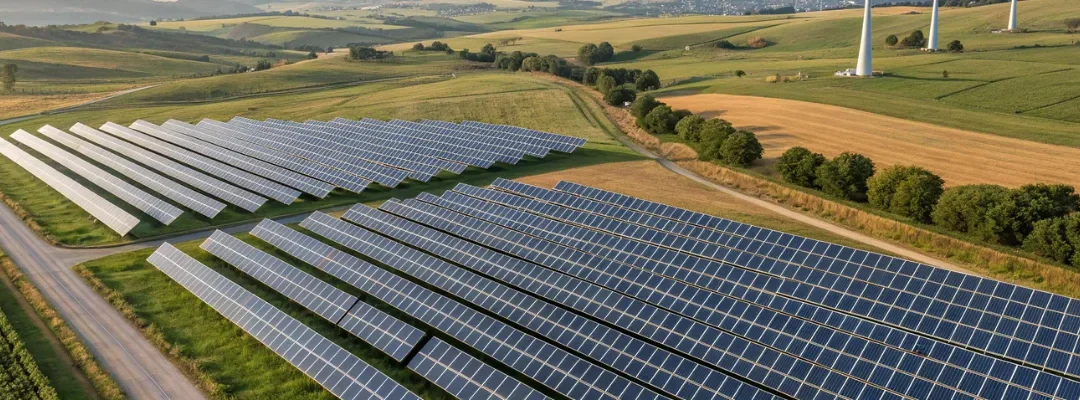Introduction
India is pursuing one of the world’s boldest clean energy ambitions — achieving 500 GW of renewable energy by 2030, with solar power contributing the largest share.
Massive solar parks are at the center of this strategy. But one critical factor underpins every solar park project: land.
In a country where land ownership is highly fragmented, the role of land aggregators is indispensable. They bridge the gap between hundreds of small landowners and large-scale solar developers.
This article explores the real-world challenges, emerging models, and game-changing opportunities for land aggregators in India’s solar growth story.
Why Land Aggregators Are Vital to India’s Solar Growth
Setting up a 500 MW solar park requires anywhere between 2,000 to 2,500 acres. But in India:
- Land is fragmented across hundreds of farmers.
- Land records are often outdated or inconsistent.
- Legal disputes and mistrust slow down deals.
Land aggregators enable solar development by:
- Consolidating small parcels into contiguous land banks.
- Verifying ownership and resolving legal/title issues.
- Facilitating transparent deals with farmers.
- Navigating regulatory hurdles to speed up approvals.
Top Challenges Land Aggregators Face in India
1. Fragmented Ownership
A single project may involve negotiating with 300–500 farmers. Aligning expectations and legal documentation across so many owners is a herculean task.
2. Title and Legal Complexities
Land in India often suffers from unclear succession, pending litigation, or existing mortgages — any of which can delay or derail a solar project.
3. Mistrust Among Farmers
Many farmers fear being shortchanged or permanently displaced. Without clear communication and benefit-sharing models, resistance is common.
4. Regulatory Bottlenecks
From land use conversion (agricultural to non-agricultural) to environmental and revenue department approvals, the process is slow and multi-layered.
5. Price Escalation After Project News
Once news spreads about a solar project, landowners often inflate prices, increasing project costs and reducing investor confidence.
6. Local Political Pressures
Local political actors may influence land negotiations or approvals — sometimes favorably, sometimes obstructively.
Emerging Opportunities for Forward-Looking Aggregators
1. Skyrocketing Solar Land Demand
To meet the 2030 target, India will need over 100 new solar parks. This creates ongoing demand for skilled land aggregators in every state.
2. Shift Toward Transparent Lease Models
Long-term leases (20–30 years) are gaining traction over outright purchases. They:
- Preserve farmers’ ownership
- Provide stable income
- Lower acquisition costs for developers
3. Digital Land Record Initiatives
Government programs like DILRMP are making digital land records more accessible, reducing due diligence time.
4. Aggregator–Developer Partnerships
Aggregators who work closely with solar EPCs, IPPs, and green energy investors can create long-term business pipelines, beyond one-off deals.
5. Dual-Use Models: Agrivoltaics
Future-ready aggregators can promote agrivoltaic solutions — combining farming with solar panels — offering win-win models for farmers and developers.
6. ESG-Focused Investment Surge
International ESG funds are increasingly investing in India. Ethical and transparent land aggregation processes help attract this capital.
Case Study: Karnataka’s Pavagada Solar Park (2,050 MW)
In Pavagada, aggregators successfully facilitated long-term leases with over 2,300 farmers, ensuring:
- Farmer incomes without selling land
- Minimal disputes
- Investor confidence for large-scale funding
This model is now being adapted across states like Rajasthan, Gujarat, and Andhra Pradesh.
Trust, Transparency & Local Expertise Will Win
To thrive in this evolving landscape, land aggregators must:
- Provide first-hand knowledge of local land laws and culture
- Be transparent in pricing and process
- Partner with local officials, lawyers, and surveyors
- Maintain clear records and documentation
- Educate farmers on leasing vs selling
By doing so, they become value-adding partners, not just middlemen.

